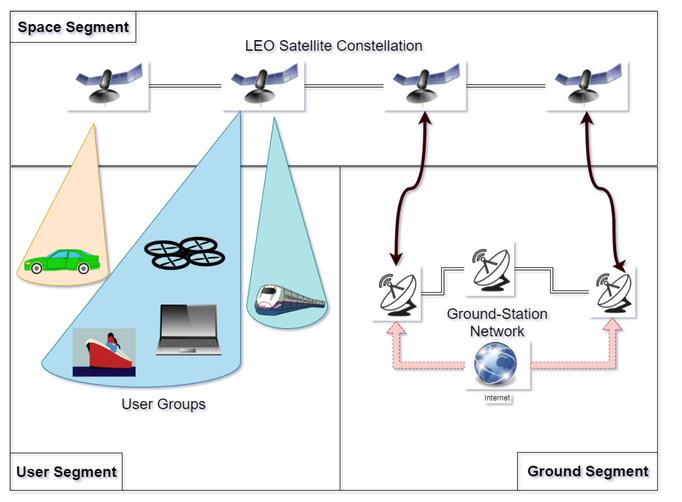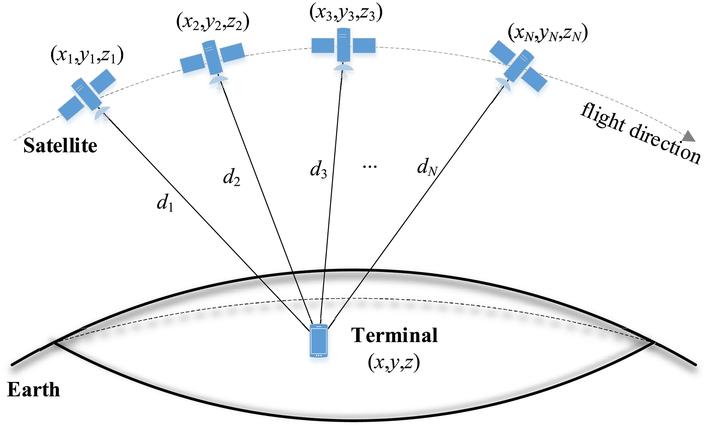
Testing squares up to LEO Satcom challenges
Today’s satellite communication systems combine features from legacy cellular networks and emerging wireless technologies. New constellations are under development that attempt to provide ubiquitous broadband mobility via NewSpace Low Earth Orbit (LEO) satellite networks that include ground stations and user terminals.
LEO constellations promise vast improvements in latency and coverage. For example, Starlink latency performs roughly 15 – 20 times faster than GEO satellites. Such constellations offer a significant increase in aggregate network capacity, thus enabling satellites to support time-sensitive applications such as video streaming and data-heavy applications. However, the LEO environment introduces challenging test requirements compared to legacy GEO VSAT terminals.
LEO networks need to deploy user terminals that provide an agnostic interface between the satellite and the end-user communication device. These CPE-like devices communicate via a commercial interface, such as Ethernet, to a commercial off-the-shelf device, such as a server, base station or Wi-Fi router. The user terminal essentially acts as a transparent relay to a preferred commercial user device.
Networks and terminal vendors need to thoroughly test the embedded wireless communication systems and components to ensure uninterrupted operation with high quality of service. Additionally, manufacturers need to reduce test time and keep user terminal costs at a practical level. These challenges demand test and measurement solutions that cost-efficiently provide high measurement performance and repeatability.
One particular issue in the LEO constellations is the high-rate Doppler effect that contributes to complex handovers. This requires greater complexity in the radio resource management (RRM) system.
Some constellation scenarios involve several handovers per minute, and this creates new scheduling issues. Protocol stacks are complex too, with user terminals behaving like terrestrial mobile phones, thus applying greater burden on the RRM related to handovers and scheduling. Verification engineers must consider the nuances of testing and validating RRM performance of LEO terminal radios.
Modems running commercial firmware require dynamic algorithms that respond in real time when terminals measure network power, provide measurement reporting and respond to system scheduling.The strictly programmed commercial firmware fixes the radio’s dynamic behaviour, thus preventing controlled RF parametric testing. Test engineers cannot parametrically characterize modems and RF systems under these conditions. In an ideal world, a test engineer sets the modem state machine to any condition and executes measurements in that controlled configuration. Legacy terrestrial mobility engineering teams benefit from “callboxes”, which are configurable network emulator test systems controlling mobile phone state machines. They make RF parametric measurements on a mobile phone in a controlled state, such as fixed power or frequency.
So, how can NewSpace engineers realize the same features of a callbox, given the cost constraints? The answer lies in using either golden radios or software defined radios (SDR).
System and test engineering teams already use golden radios in wireless applications. To accommodate complex NewSpace RRM and even basic RF performance requirements, modified golden radios could include software instructions which interrupt the terminal under test, allowing test engineers to manipulate radio power, frequency and other RF and modem conditions.

In some cases, instead of modifying a golden radio, an SDR might better address the test solution. SDRs allow for a scaled-down set of stack features that only need to accommodate the test requirements. Here, only a minimum suite of protocol features needs implementing, depending on the test requirements.
Historically, the mobile phone industry relied on conducted measurements with a variety of industry certifications prior to commercialization. For satellite user terminals with beamforming and tracking antennas, over-the-air RF measurements take precedence over conducted measurements. The wireless industry is still debating how best to accomplish this for satellite user terminals and next generation 5G mobile phones. Many new near-field and quasi near-field chamber concepts are utilized.
The added complexity of modem testing also influences production testing. While initial manufacturing volumes might not exceed hundreds or even thousands of units, networks anticipate full production volumes with yields in the millions of units. Manufacturers require advanced strategies for reducing cost through efficient test methods.
RF calibration, or tuning and alignment for RF frontend modules, is common to both mobile phone and user terminal manufacturing. Terminals must compensate for non-linearities in power amplifiers during the manufacturing process. Swept power and frequency measurement techniques, coupled with advanced measurement algorithms, remove non-linearities and allow terminals to pass RF measurement specifications. In addition to RF calibration, all devices require basic RF and modem verification in manufacturing. Fast test methods utilizing pre-programmed sweep methods significantly lower overall test time by reducing iterative and repetitive setup production processes. By implementing such fast test modes in the system engineering design, chipset and modem designers can engineer these features early with technical ease and minimal cost.
Different NewSpace design approaches impact ground station functionality. Networks based on digital regenerative payloads implement much of the radio resource management on-board the satellite. For bent pipe systems, the RRM sophistication resides in the ground station, which direct the user terminals regarding IP scheduling and radio control.
Gateway and TT&C ground stations require similar testing to the user terminals. The needs for RF calibration and modem verification are similar, although methodologies could differ depending on cost and complexity. The large data throughput and combining of multiple return link signals adds significant complexity to the bandwidth and data handling for gateway terminals. Gateway modems and RF systems typically require more rigorous testing compared to user terminals.
LEO constellation terminals require test solutions that provide high measurement performance and repeatability for complex systems. Innovative measurement solutions enable users to successfully design, develop and test NewSpace user terminals, ground stations and satellite payloads. These test methods should be considered early in system engineering planning.
LEO SatCom challenges and other topics will be discussed at the upcoming series of Satellite Industry Day webinars from Rohde & Schwarz. The first of four free virtual events takes place on 22ndFebruary 2022, and will focus on the latest developments and applications in satellite and space technology.
Held in conjunction with industry partners and leading experts, the events will enable participants to meet virtually with experts and discuss topics including:
The first event “The challenges of new space satellite constellations“ will focus on the challenges of how to plan reliable satellite links worldwide and optimize transponder usage, even for large satellite networks. Moreover, topics include production and test of small satellites, adaptive beam steering and beamforming with phased array antennas, liquid crystal based antenna designs and optimisation of beam-and cluster hopping systems.
Further information and registration for the free Satellite Industry Day Series 2022 is available at: https://www.rohde-schwarz.com/aerospace-defense/satellite-days
Download our free whitepaper to learn more about NewSpace user terminals, testing challenges.
}})